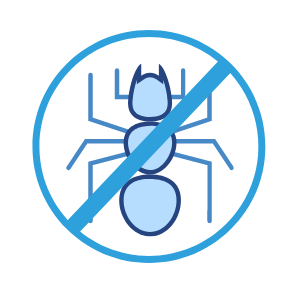Fumigation is the treatment of development to kill pests, for instance, wood-depleting frightening little creatures through fixing it or including it with an impervious cover like a tent, and Pest Control Colchester with liquid creepy-crawly poison for an extended period, ordinarily of 24–72 hours. This is extreme and gravely planned as the development can’t be used during the treatment, yet it centers around all life periods of pests.
Another choice, space treatment, is right of passage or obfuscation to dissipate a liquid bug splash in the climate inside a design without flight or impervious fixing, allowing most work inside the construction to continue, to the detriment of reduced invasion. Contact creepy-crawly harms are all things considered used to restrict reliable waiting effects.
Disinfection :
Masses of pests frightening little animals can to a great extent be definitely diminished by the appearance of sterile individuals. This incorporates the mass raising of a pest, cleaning it through X-radiates or other means, and conveying it to wild people. It is particularly useful where a female simply mates once and where the bug doesn’t dissipate extensively. This technique has been adequately used against the New World screw-worm fly, a couple of kinds of the tsetse fly, tropical normal item flies, the pink bollworm and the codling moth, among others.
Insurance :
Boron, a known pesticide, can be impregnated into the paper fibers of cellulose security at explicit levels to achieve a mechanical kill factor for self-preparing bugs like bugs, cockroaches, termites, and that is only the start. The extension of security into the space and dividers of development can give control of ordinary pests, in any case, acknowledged assurance benefits an especially generous warm envelope and acoustic disturbance dropping properties. The EPA coordinates this sort of wide use pesticide inside the United States allowing it to simply be sold and presented by approved pest chiefs specialists as a part of a consolidated pest the board program. Basically adding Boron or an EPA-enlisted pesticide to an assurance doesn’t qualify it as a pesticide. The portion and method ought to be meticulously controlled and noticed.
Procedures for unequivocal pests :
- Ordinary rodent control
A couple of untamed life recuperation affiliations empower ordinary kinds of rodent control through denial and tracker backing and hindering discretionary hurting without a doubt. The United States Environmental Protection Agency notes in its Proposed Risk Mitigation Decision for Nine Rodenticides that “without living space change to make districts less appealing to commensal rodents, even obliteration will not hold new peoples back from recolonizing the domain.” The United States Environmental Protection Agency has suggested rules for customary rodent control and for safe getting in nearby areas with resulting conveyance to nature. People now and again attempt to limit rodent hurt using enemies of specialists. Gum fir oil from the tree Abies balsamea is an EPA upheld non-unsafe rodent repellent. Acacia polyacantha subsp. campylacantha root releases engineered combinations that shock animals including rodents.
- Extra space pests
Bug pests including the Mediterranean flour moth, the Indian meal moth, the cigarette bug, the drug store unpleasant little animal, the perplexed flour scarab, the red flour bug, the broker grain bug, the sawtoothed grain bug, the wheat weevil, the maize weevil and the rice weevil attack set aside dry food assortments like flour, oats and pasta.

In the home, staples saw to be attacked are by and large discarded, and taking care of such things in fixed holders should hold the issue back from reoccurring. The eggs of these frightening little creatures are presumably going to go unnoticed, with the hatchlings being the perilous life stage, and the adult the most unmistakable stage. Since pesticides are inconsistent to utilize near food, elective prescriptions, for instance, freezing for four days at 0 °F (−18 °C) or warming for 30 minutes at 130 °F (54 °C) should kill any bugs present.
